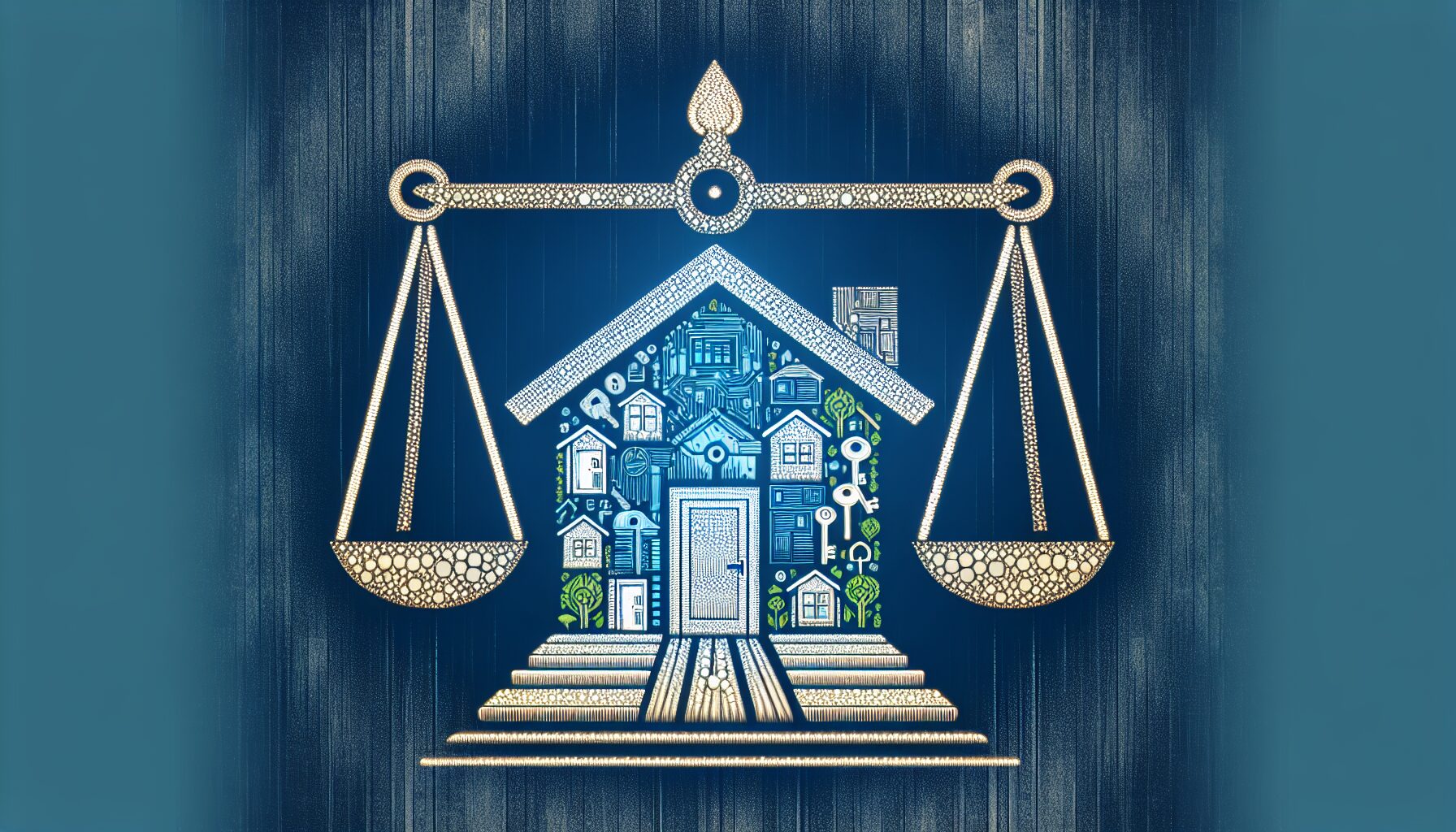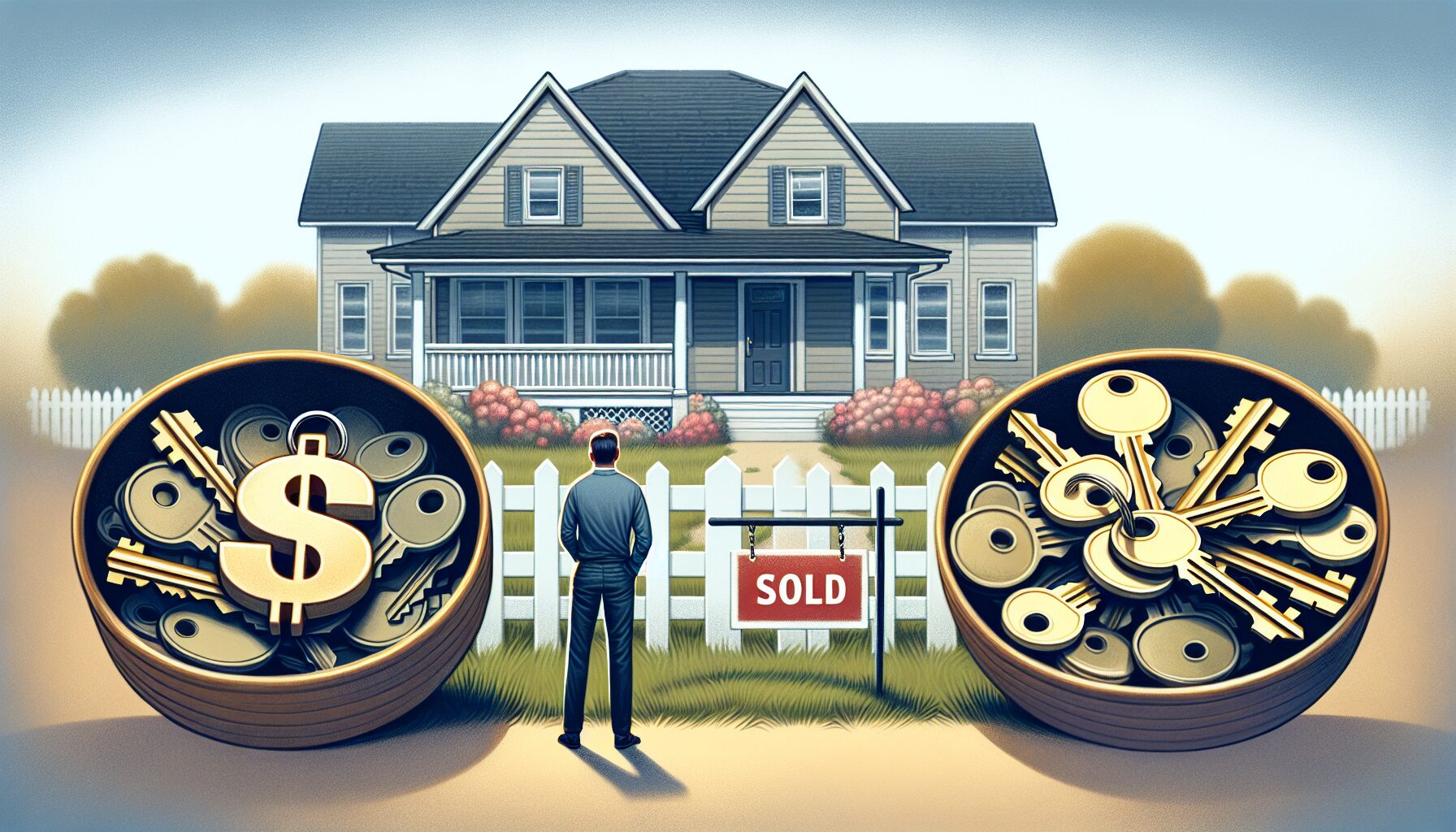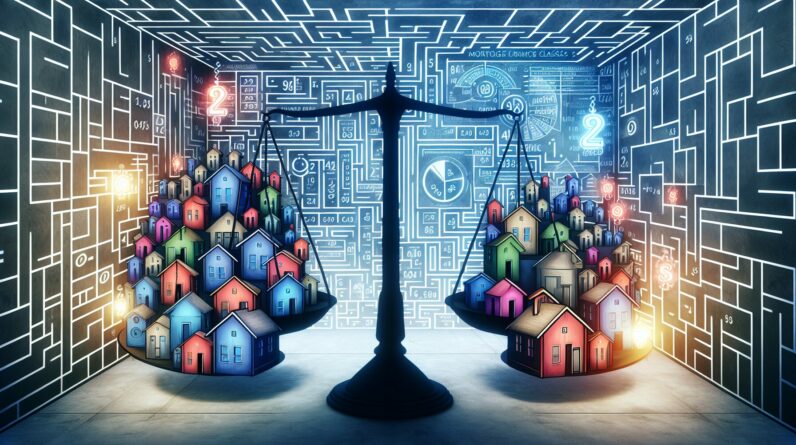
Are you in the market for a mortgage but feeling a little overwhelmed by the many options available? Don’t worry, you’re not alone. When it comes to mortgages, it’s important to understand the most common type that is widely preferred by homeowners. So, what is the most common mortgage? Let’s explore and shed some light on this popular choice that may just be the right fit for you.
Table of Contents
Fixed-Rate Mortgage (FRM)
Definition
A Fixed-Rate Mortgage (FRM) is a type of mortgage where the interest rate remains constant throughout the entire loan term. This means that your monthly mortgage payments will remain the same, providing stability and predictability for homeowners.
Interest Rate
With a Fixed-Rate Mortgage, the interest rate is determined at the time of loan origination and remains unchanged for the entire duration of the loan. This allows borrowers to accurately budget for their mortgage payments over the long term without worrying about fluctuations in interest rates.
Loan Term
Fixed-Rate Mortgages typically have loan terms of 15, 20, or 30 years. The most popular choice among homeowners is the 30-year fixed-rate mortgage, which provides the longest repayment period and spreads out the mortgage payments over a longer time frame, resulting in lower monthly payments.
Advantages
One of the main advantages of a Fixed-Rate Mortgage is the stability it offers. Your monthly mortgage payments will remain the same throughout the entire loan term, regardless of any fluctuations in the housing market or interest rates. This predictability allows you to plan your finances effectively and budget for other expenses.
Additionally, a Fixed-Rate Mortgage provides protection against rising interest rates. If you lock in a low interest rate at the beginning of your loan, it will not increase, even if interest rates in the market rise in the future. This can save you a significant amount of money over time.
Disadvantages
While the stability of a Fixed-Rate Mortgage is a major advantage, it can also be a disadvantage in certain situations. If interest rates in the market drop significantly after you secure your mortgage, you may miss out on the opportunity to refinance at a lower rate and potentially save money on monthly payments.
Furthermore, Fixed-Rate Mortgages may have higher interest rates compared to other types of mortgages, such as Adjustable-Rate Mortgages (ARMs), especially when purchasing a home with less than stellar credit. This can result in higher monthly payments compared to other loan options.
Adjustable-Rate Mortgage (ARM)
Definition
An Adjustable-Rate Mortgage (ARM) is a type of mortgage where the interest rate is subject to change periodically. The rate typically adjusts annually or after a predetermined initial fixed-rate period. ARM loans are structured to reflect changes in market interest rates.
Interest Rate
The interest rate on an Adjustable-Rate Mortgage is initially lower than that of a Fixed-Rate Mortgage, making it an attractive option for borrowers looking to save money on monthly payments in the short term. However, after the initial fixed-rate period, the interest rate on an ARM may increase or decrease based on market conditions.
Loan Term
The loan term for an Adjustable-Rate Mortgage is similar to that of Fixed-Rate Mortgages, with options ranging from 15 to 30 years. However, the initial fixed-rate period for an ARM is typically shorter, commonly lasting between 5 to 10 years before the rate begins to adjust periodically.
Advantages
One of the primary advantages of an Adjustable-Rate Mortgage is the lower initial interest rate. This can translate into lower monthly mortgage payments during the fixed-rate period, allowing borrowers to allocate their finances towards other expenses or savings.
Additionally, if interest rates in the market decrease after the fixed-rate period, borrowers with ARMs have the potential to benefit from lower monthly payments compared to those with Fixed-Rate Mortgages. This makes ARMs a favorable option for individuals who plan to sell or refinance their homes before the rate adjusts.
Disadvantages
One of the main disadvantages of an ARM is the uncertainty surrounding the future interest rates. Once the initial fixed-rate period ends, borrowers must be prepared for potential increases in their monthly payments if interest rates in the market rise. This unpredictability can make budgeting and financial planning more challenging, especially for individuals with limited disposable income.
Furthermore, the maximum interest rate cap, referred to as the “lifetime cap,” sets a limit on how much the interest rate can increase over the life of the loan. However, this cap may still result in significantly higher monthly payments if market interest rates spike, potentially causing financial strain for borrowers.

Conventional Mortgage
Definition
A Conventional Mortgage is a type of mortgage that is not insured or guaranteed by a government agency like the Federal Housing Administration (FHA) or Department of Veterans Affairs (VA). Instead, these mortgages are backed by private lenders or financial institutions.
Requirements
Conventional Mortgages typically have stricter requirements compared to government-backed loans. Lenders often require a higher credit score and a larger down payment, usually at least 5% to 20% of the home’s purchase price. This type of mortgage is commonly used by borrowers with strong credit history and stable income.
Interest Rates
Conventional Mortgages offer a variety of interest rate options, including both fixed-rate and adjustable-rate options. The interest rates on Conventional Mortgages are determined by market conditions and the borrower’s creditworthiness. Generally, borrowers with better credit scores and lower debt-to-income ratios are eligible for lower interest rates.
FHA Loan
Definition
An FHA Loan, also known as a Federal Housing Administration Loan, is a mortgage insured by the FHA, which is a division of the U.S. Department of Housing and Urban Development. FHA Loans are designed to help borrowers, especially first-time homebuyers, who may not qualify for a conventional mortgage.
Requirements
FHA Loans have more lenient requirements compared to conventional mortgages, making them more accessible to a broader range of borrowers. The minimum credit score requirement for an FHA Loan is typically lower than what is required for a conventional mortgage. Additionally, the down payment requirement is often lower, with some borrowers being eligible for a down payment as low as 3.5% of the home’s purchase price.
Advantages
One of the main advantages of an FHA Loan is the lower down payment requirement, which allows borrowers with limited savings to become homeowners. Additionally, the credit score requirements for FHA Loans are generally more forgiving, making them accessible to individuals with lower credit scores or limited credit history.
Furthermore, FHA Loans offer more flexible qualification guidelines, taking into consideration factors such as debt-to-income ratio and employment history. This can make it easier for first-time homebuyers or individuals with less stable income to qualify for a mortgage.
Disadvantages
FHA Loans have some drawbacks to consider. One disadvantage is the requirement for mortgage insurance premiums (MIP), which borrowers must pay for the duration of the loan. This additional cost can increase the overall monthly payments, potentially making it less affordable in the long run.
Additionally, FHA Loans have lower loan limits compared to conventional mortgages, which may limit the borrowing potential for individuals looking to purchase higher-priced homes.

VA Loan
Definition
A VA Loan is a mortgage loan guaranteed by the U.S. Department of Veterans Affairs (VA) and is available to eligible veterans, active-duty service members, and surviving spouses. VA Loans are designed to provide favorable financing options and opportunities for homeownership to veterans and their families.
Requirements
To be eligible for a VA Loan, borrowers must meet specific requirements, including serving in the military for a certain period of time and receiving an honorable discharge. The duration of service required can vary depending on the era in which the individual served. Additionally, lenders may consider factors such as credit score and income when evaluating VA Loan applications.
Advantages
VA Loans offer several advantages for eligible borrowers. One of the key benefits is the ability to finance up to 100% of the home’s purchase price without requiring a down payment. This allows veterans to become homeowners without the need for a large upfront payment, making homeownership more achievable.
Another advantage is that VA Loans do not require borrowers to pay for private mortgage insurance (PMI), which is typically required for conventional mortgages with a down payment of less than 20%. This can result in lower monthly payments for VA Loan borrowers.
Disadvantages
While VA Loans offer numerous benefits, they also have certain limitations and considerations. One disadvantage is that VA Loans are only available to eligible veterans, active-duty service members, and surviving spouses. This means that not all individuals will qualify for a VA Loan, limiting its accessibility compared to conventional or FHA Loans.
Additionally, VA Loans may have stricter property requirements, including some restrictions on the types of properties that are eligible for financing. These requirements ensure that the property meets certain standards, which could limit the options available to borrowers.
USDA Loan
Definition
A USDA Loan, also known as a Rural Development Loan, is a mortgage loan guaranteed by the U.S. Department of Agriculture (USDA). This type of loan is designed to promote homeownership in rural areas and provide affordable financing options for eligible borrowers.
Requirements
To be eligible for a USDA Loan, borrowers must meet certain criteria, including the property’s location in a qualified rural area and the household’s income not exceeding specific limits based on the area’s median income. Additionally, borrowers must demonstrate the ability to repay the loan and meet credit requirements.
Advantages
One of the main advantages of a USDA Loan is the ability to finance up to 100% of the home’s appraised value without requiring a down payment. This makes homeownership more attainable for individuals who may not have sufficient savings for a down payment.
USDA Loans also offer competitive interest rates, making them an affordable option for eligible borrowers. Additionally, USDA Loans may provide opportunities for lower monthly mortgage insurance premiums compared to other loan types.
Disadvantages
While USDA Loans offer significant advantages, there are a few disadvantages to consider. One disadvantage is that USDA Loans are only available for properties located in eligible rural areas. This means that borrowers looking to purchase homes in urban or suburban areas may not qualify for this type of loan.
Another consideration is that USDA Loans may have income limits, limiting eligibility for borrowers with higher incomes. Additionally, USDA Loans may have stricter property requirements to ensure that the property meets certain standards.

Interest-Only Mortgage
Definition
An Interest-Only Mortgage is a type of mortgage where borrowers are only required to pay the interest on the loan for a specified period, typically ranging from five to ten years. During the interest-only period, the principal balance remains unchanged.
Interest Rate
The interest rate on an Interest-Only Mortgage is typically similar to that of other mortgage types. However, since the principal balance is not being paid down during the interest-only period, the monthly payments are lower compared to mortgages with principal and interest payments.
Loan Term
The loan term for an Interest-Only Mortgage usually ranges from 30 to 40 years. However, the interest-only period is typically limited to the first few years of the loan term. After the interest-only period ends, borrowers are required to make fully-amortizing payments, including both principal and interest.
Advantages
One of the main advantages of an Interest-Only Mortgage is the lower monthly payments during the interest-only period. This can provide short-term financial relief for borrowers who anticipate an increase in income or plan to sell the property before the fully-amortizing payments begin.
Interest-Only Mortgages can also allow borrowers to allocate their finances towards other investments or expenses during the interest-only period. This flexibility can be appealing for individuals who have specific financial goals or investment opportunities.
Disadvantages
While Interest-Only Mortgages offer advantages, they also have certain risks and considerations. One disadvantage is that after the interest-only period ends, borrowers must make fully-amortizing payments, which can significantly increase monthly payments. This sudden increase may pose financial challenges, especially if borrowers are not prepared for the higher payments.
Additionally, since the principal balance is not paid down during the interest-only period, borrowers do not build equity in their homes. This means that if the housing market experiences a downturn or the property value decreases, borrowers may end up owing more on the mortgage than the home is worth, resulting in negative equity.
Jumbo Mortgage
Definition
A Jumbo Mortgage, also known as a Non-Conforming Loan, is a mortgage that exceeds the loan limits set by government-sponsored enterprises like Fannie Mae and Freddie Mac. These loans are typically used to finance higher-priced properties or homes in high-cost areas where the standard conforming loan limits do not apply.
Requirements
Jumbo Mortgages have stricter requirements compared to conventional mortgages. Lenders may require higher credit scores, lower debt-to-income ratios, and a larger down payment, typically at least 20% of the home’s purchase price. These requirements ensure that borrowers have the financial capacity to handle larger loan amounts.
Interest Rates
Interest rates on Jumbo Mortgages can vary based on market conditions and the borrower’s creditworthiness. Since Jumbo Mortgages represent higher loan amounts, lenders may view them as higher risk, resulting in slightly higher interest rates compared to conventional mortgages with smaller loan amounts.
Advantages
One of the advantages of a Jumbo Mortgage is the ability to finance higher-priced properties or homes in expensive real estate markets. This allows borrowers to purchase their dream homes without the need for multiple loans or compromising on their preferred location.
Additionally, Jumbo Mortgages may provide more flexibility in terms of loan structure and repayment options compared to conforming loans. This flexibility can be beneficial for borrowers with unique financial situations or specific needs.
Disadvantages
The main disadvantage of a Jumbo Mortgage is the higher borrowing costs. Not only do Jumbo Mortgages tend to have higher interest rates, but they also require a larger down payment and may have stricter qualification requirements. These factors can make Jumbo Mortgages less accessible for some borrowers.
Another consideration is that Jumbo Mortgages may have stricter underwriting standards, resulting in a lengthier and more thorough approval process. Borrowers should be prepared for additional documentation requirements and potential delays when applying for a Jumbo Mortgage.

Balloon Mortgage
Definition
A Balloon Mortgage is a type of mortgage that offers low, fixed monthly payments for a specific period, typically ranging from five to seven years. At the end of the term, the remaining balance of the loan, also known as the balloon payment, becomes due in full.
Interest Rate
The interest rate on a Balloon Mortgage is typically lower compared to other mortgage types, allowing borrowers to enjoy lower monthly payments during the initial fixed-rate period. However, once the balloon payment becomes due, borrowers must either pay off the remaining balance or refinance the loan.
Loan Term
The loan term for a Balloon Mortgage is usually shorter, typically ranging from 10 to 15 years. During the initial fixed-rate period, borrowers make monthly payments based on a longer amortization schedule. However, at the end of the term, the remaining balance must be paid off or refinanced.
Advantages
One of the main advantages of a Balloon Mortgage is the lower monthly payments during the initial fixed-rate period. This can be beneficial for borrowers who expect a significant increase in income or plan to sell or refinance the property before the balloon payment becomes due.
Balloon Mortgages can also provide flexibility for borrowers who are confident that their financial situation will improve or that they will be able to secure additional financing to pay off the balloon payment when it becomes due.
Disadvantages
The main disadvantage of a Balloon Mortgage is the risk associated with the large balloon payment at the end of the term. If borrowers are unable to pay off the remaining balance or refinance the loan, they may face foreclosure and the potential loss of their home.
Additionally, refinancing the loan to cover the balloon payment may not be possible if interest rates increase significantly or if the borrower’s financial situation deteriorates. This risk makes Balloon Mortgages more suitable for borrowers who have a clear plan to either sell the property or secure financing to pay off the balloon payment.
Reverse Mortgage
Definition
A Reverse Mortgage is a loan available to homeowners aged 62 or older, allowing them to convert a portion of their home equity into cash. Unlike traditional mortgages, reverse mortgages do not require monthly mortgage payments. Instead, the loan is repaid when the homeowner moves out of the property, sells the home, or passes away.
Eligibility
To be eligible for a Reverse Mortgage, homeowners must be at least 62 years old and have sufficient home equity. The amount of equity available for borrowing depends on factors such as the homeowner’s age, the value of the home, and currently prevailing interest rates.
Advantages
One of the main advantages of a Reverse Mortgage is that it provides a source of income for retirees who have built up significant equity in their homes. This can help supplement retirement funds and cover living expenses without the need to sell the property or make monthly mortgage payments.
Reverse Mortgages also allow homeowners to remain in their homes for as long as they wish without the burden of monthly mortgage payments. This can provide peace of mind and financial stability for elderly homeowners who want to age in place.
Disadvantages
One of the main disadvantages of a Reverse Mortgage is the potential depletion of home equity over time. As the loan balance increases, the homeowner’s equity decreases, potentially limiting the amount of inheritance that can be passed on to heirs.
Additionally, Reverse Mortgages can have higher closing costs and fees compared to traditional mortgages. These costs must be taken into consideration when evaluating the overall financial impact of the loan.
It’s essential to carefully consider the advantages and disadvantages of a Reverse Mortgage and consult with a financial advisor or housing counselor before making a decision.








